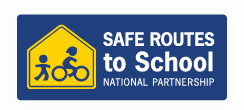No matter where you are in the world, there's a conference you can attend this year to learn more about the issues surrounding walkability. Here's a full list, with thanks to John Wetmore. And--if you're interested in speaking at one of these conferences, a few opportunities are currently available:
The American Public Health Association 141st Annual Meeting and Exposition
The meeting will be held Nov. 2-6, 2013 in Boston. The theme is Think Global, Act Local with a focus on best practices around the world. Find out more about the 2013 APHA Annual Meeting and submit abstracts here. The deadlines for submission of abstracts range from Feb. 4-8.
Safe Routes to School National Conference
The conference, Building on Success—Projects, Programs, People, will be held August 13-15, 2013, in Sacramento. The Call for Session Proposals is open from January 7 through February 15. Submit proposals here.
Photo courtesy of www.infostw.org
January
9-11 National Committee on Uniform Traffic Control Devices (NCUTCD); Alexandria, VA.
13-17 Transportation Research Board; Washington, DC
15-17 Nat'l Conf on Science, Policy and the Environment: Environmental Disasters; Washington, DC
17-18 EMBARQ -- Transforming Transportation; Washington, DC
17-19 U.S. Conference of Mayors, Winter Meeting; Washington, DC
21-22 Australian Cycling Conference; Adelaide, Australia
25-26 Iowa Bike Summit; Des Moines, IA
27-29 ASTM F13 Pedestrian/Walkway Safety and Footwear; Jacksonville, FL
28-2/2 National Sheriffs Association Winter Conference; Washington, DC
February
4-8 World of Concrete; Las Vegas, NV
5-6 ACORE - American Council On Renewable Energy; Washington, DC
6 Intermodes; Brussels, Belgium
7-9 New Partners For Smart Growth; Kansas City, KS
10-12 National Conference of Regions; Washington, DC
11-12 Colorado Bike Summit; Denver, CO
12-14 Professional Trail Builders Association; Albuquerque, NM
13-15 Sustainable Communities Conference; Windsor Essex, ON, Canada
15 Media That Matters, AU; Washington, DC
17-20 Conference on the Value of Play; Clemson, SC
20-23 American College of Preventive Medicine; Phoenix, AZ
21-23 AASA - American Assn. of School Administrators, National Conference on Education; Los Angeles, CA
22-24 North American Handmade Bicycle Show; Denver, CO
22-26 ATSSA - American Traffic Safety Services Assn. Convention and Traffic Expo; San Diego, CA
23 Alumni Day; Princeton, NJ
26-28 Active Living Research Conference; San Diego, CA
27-3/1 AASHTO Washington Briefing; Washington, DC









